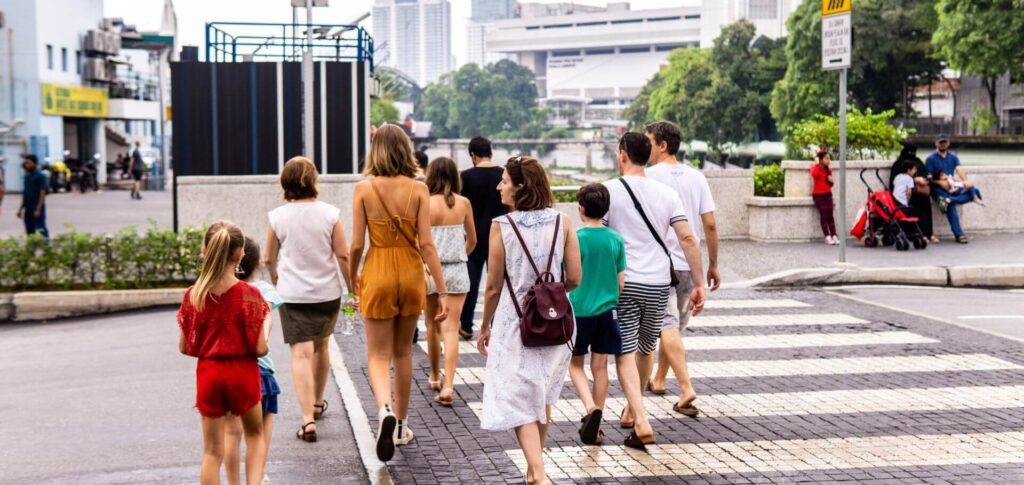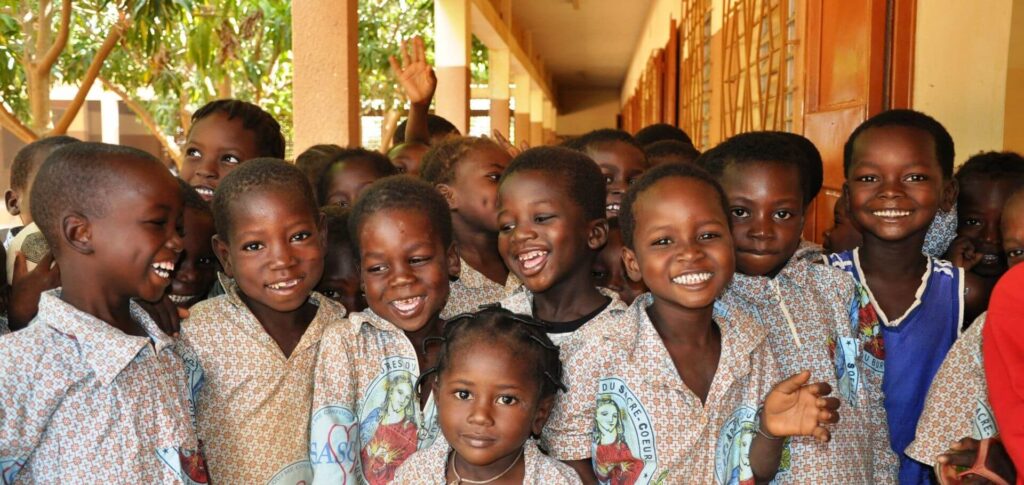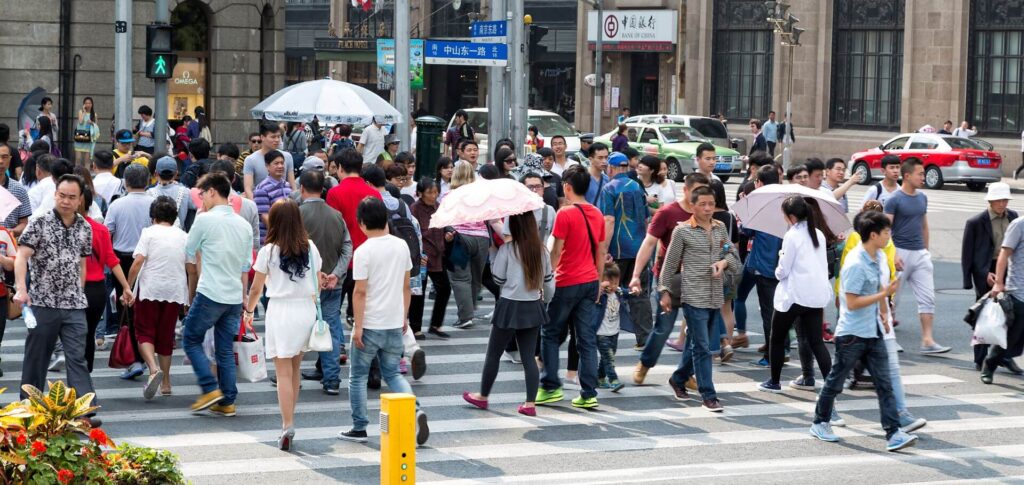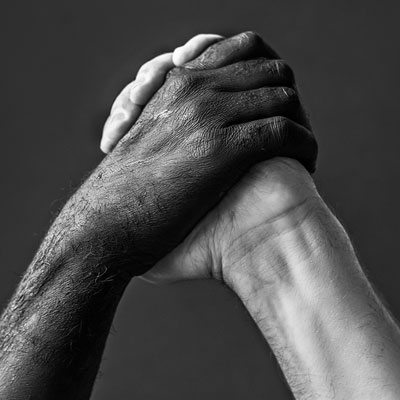Urban Communities
The Current and Potential Future of Cities
How many Christians do you think there were in the year AD 100 compared to just 200 years later just before Emperor Constantine? The answer is staggering.
In AD 100 there were as few as 25,000 Christians. Then a few hundred years later in AD 310 there were up to 20,000,000 Christians. 1
How did this happen? Christianity grew 800 times in 200 years because the early church went to strategic urban centers in Western Asia and Southern Europe. The entire New Testament can be understood as Jesus’ mission to die in Jerusalem as the religious capital of the world and Paul going to die in Rome as the political capital of the world. The early church was an urban church planting movement.
The explosive church growth of the first century needs to inform 21st century church strategy
In 2023 the global population surpassed 8 billion people. It is forecasted by the United Nations that the global population will grow to 9.735 billion people by 2050. Of that population, 68.4 percent will be urban dwellers.2 By continent, Asia represents 60 percent of the global population and Africa represents 17 percent. In other words, more than three quarters of the world lives in Asia and Africa. In the world today, there are 48 ‘mega cities’ with more than 10 million people each. Of these 48 cities, 29 are in Asia, four are in Africa, three are in Europe, three are in South America, and three are in North America.
If demographers are correct, the fastest growing continent for Christianity will be Africa. According to the data in the World Christian Database, the African church will grow numerically by nearly 600 million people (692 million to 1.28 billion) from 2022 to 2050. Given that the average age for Africans is currently 19, investing into the lives of young African leaders is of highest priority.
The City Vision graphic ‘Circle of Significance’, a visual aid showing a large circle spanning much of Asia, provides a stunning analysis:3
- 29 megacities of 10 million or more are in this circle
- Over 50 percent of the global population lives in this circle
- 99 percent of all Hindus live in this circle
- 98 percent of all Buddhists live in this circle
- 60 percent of all Muslims live in this circle
- Christians comprise 9 percent of the Asian population
If indeed two-thirds of the world by 2050 will be living in cities, and predominantly in the cities of Africa and Asia, further reflection is needed for the church on those emerging dynamics.

Opportunities and Challenges–Exploration of the African Context
Throughout history, God has called his servants to address the gospel to cities. At no time has this been more urgent than in today’s urbanizing world and never has it been truer that he who wins the city wins the world. The church is to move quickly to make its impact on the city before the city reshapes the church.4 To understand the opportunities and challenges cities present, we turn to Africa.
Africa in the centre of global Christianity
Africa is home to the world’s youngest and fastest-growing population and many are moving to the city, urbanizing more rapidly than any other part of the planet. Africa’s 1.1 billion citizens will likely double in number by 2050. Africa’s youth population is growing faster than any other region, with 70 percent of the population being under the age of 30. Young people now account for about 20 percent of the total population, 40 percent of the workforce and 60 percent of the unemployed.5
An interesting dynamic, however, is the fact that Africa has two flourishing and expanding faiths—Christianity and Islam—and both are profiting from the demographic expansion going on currently. The church in Africa is currently experiencing a surge in numerical growth, consequently making Christianity the continent’s leading religion, and even now emerging as the global ‘center of gravity of Christianity’. Professor Andrew Walls observes, ‘it is Africans and Asians and Latin Americans who will be the representative Christians, those who represent the Christian norm, the Christian mainstream, of the twenty-first and twenty-second centuries.’6 What is the quality of that representation? What impact are the prosperity gospel, nominalism, syncretism, and compromise of biblical faith having on the quality of representation?
‘it is Africans and Asians and Latin Americans who will be the representative Christians, those who represent the Christian norm, the Christian mainstream, of the twenty-first and twenty-second centuries.’6
The opportunities and challenges of urban Africa
Many African megacities such as Lagos, Cairo, Kinshasa, Nairobi, Johannesburg, Pretoria, and Khartoum already struggle to absorb the bulk of the urban population. This results in urban poverty with all the main conditions of overcrowded living: congestion, unemployment, stark inequalities, a lack of social and community networks. This also is accompanied by crippling social problems including crime, violence, inadequate basic infrastructure, and low standards of living. In sub-Saharan Africa, nearly 60 percent of urban residents live in slums.7 Despite tremendous growth, however, the church in Africa still lacks the influence and impact one would expect it to have. The church is described as being one mile long and one inch deep.
Embracing the season of opportunities
The World Cities Report 2022, developed by the United Nations Habitat, presents this critical challenge: ‘cities that are socially inclusive and work for all their residents are better positioned to face environmental, public health, economic, social and any other variety of shock or stress, as cities are only as strong as their weakest link.’8
Does the church in Africa have strategies for urban mission that can satisfy the needs of the city, serving its ‘weakest link’? Can the church develop strategies, enabling productive relationships to be built, to address the primary issues of the people they serve, and to develop strong leaders, faithful organizations, and redeemed neighborhoods that live out shalom?9 Is the church able to see the potential of unlocking the pew: training and equipping every member to be light, salt, and leaven in every corner of the community? Can Africa lead a second reformation of discipling, equipping, and releasing every member to fulfill their calling as saints, priests, ambassadors, and as salt, light, and leaven?10 Transforming urban communities can happen only when movements are unleashed.11
I see in the emerging Africa cities gospel movement, championed by Movement.org, strong elements that enable leaders to develop relationships around urban mission, embracing the gospel in its totality, knowing the city, loving the city, and serving the city together.

Additional Opportunities—Exploration of the Asian Context
Women are a significant part of the church and its mission numerically anywhere in the world. This is certainly true in the cities of the world. To understand the opportunities women in cities present to accelerate change, this section will look particularly at the reality in South Asia.
The significance of women in cities
Gina Zurlo, Co-Director of the Center for the Study of Global Christianity at Gordon-Conwell Theological Seminary, says that 52 percent of global Christianity is female.12 This reality is not new. It has existed since the time of Christ—from the foot of the cross to the pioneering of the early church. Women throughout history have contributed significantly to revivals, missionary work, and church planting movements.
The first church in the Tirunelveli District (also a city) in South India was built by a woman named Rasa Clarinda, an Indian missionary and the first convert in her town (now a city) in 1785. This is the same region where Amy Carmichael founded the Dohnavur fellowship in 1901 and is known for her rescue and rehabilitation work among women and girls forced into prostitution. Both these women transformed the culture and the stereotypes of their day in the regions they worked, influencing laws, customs, and practices that were oppressive. Their influence won many to Christ. This region is today one of the regions with a higher population of Christ followers (11 percent or more).
What follows below is five opportunities to accelerate change in cities, as seen through the South Asian context.
City movements
City movements in the South Asian region are witnessing a growth spurt, which is initiating wake up calls for the church to respond to the challenges faced by women. The Disruptive Women’s Movement was launched in September 2021 under the Movement South Asia network to mobilize kingdom women for leadership in city movements. Since its launch, the movement has had an overwhelming response. Both men and women across 30 cities in the region want to see change and are gearing up for a Disruptive Women’s chapter in their cities. About 50 leaders (again both women and men) from 15 cities across South Asia held a strategic summit in 2023 in India to forge their way forward in building a Disruptive Women Network’s presence in their cities.
Nonprofits
The response of the church in South Asia to the cries of pain of women and girls has seen the birth of a significant number of nonprofit organizations in the region focusing on rehabilitative work. Leading pioneers in this are globally recognized nonprofits like World Vision, International Justice Mission, Compassion International, and several others. In recent times there are also several indigenous nonprofits like Women of Worth, Lighthouse Disha, and several others initiated by women for women. Bringing about a collaboration of these well-established international nonprofits with the indigenous nonprofits that are making a difference can accelerate impact. This could be a strategic move with the international nonprofits facing the threat of closure in the region because of growing persecution.
Marketplace
City movements are today actively building and investing in marketplace initiatives in the region. Conscious effort to include women in these initiatives both at the leadership and participatory levels can accelerate the reach of the gospel to women in workplaces. There is a growing community of Christ followers who are committed to developing marketplace disciples who see business as missions.
Christians for Biblical Equality (CBE) were hoping to launch their India chapter in 2023,
Churches as safe spaces
With the alarming rate of violence against women and girls (VAWG) in the region, churches could be equipped to become safe spaces in the city for women and girls. A growing example in this regard is Chennai in South India, a city with about 6,000 churches. There is literally a local church in every pin code. If all of these churches became safe spaces for women there would be significant gospel disruption in the city. But, statistically, churches are seen as more regressive than the world. A recent survey conducted by the Chennai Transformation Network reveals that 56 percent of women within the church have faced some form of abuse. Only 17 percent feel that the church helped them in some way. The good news here is that the Chennai Transformation Network (CTN) is rising up to the challenge of enabling churches to become safe spaces in the city.
Changing the narrative
The Theological Research and Communications Institute (TRACI) in India in their survey on domestic violence were surprised to find that women in the church are more silent about abuse than those outside because of the way women are being discipled. Most sermons focus on how women should be silent in the church rather than on how they are kingdom assets. There is an urgent need to change the sort of narrative that discourages women from looking to the church as a sanctuary from abuse.
Resources that can change the narrative
Today, the South Asian region has numerous formal theological associations and institutions who are trying to orchestrate a change in the narrative for women in kingdom initiatives.13 Churches in the South Asian region are also rising to make an impact like the Assembly of God Church, and local churches like Avatar in Mumbai, and Powerhouse Churches in Chennai to name a few are leading the way in enabling women as kingdom leaders both in the church and in city movements. Non-formal training entities like the City-to-City, Asian Access, and the Movement Day Scholars Program14 are also helping close the gap in the narrative for women. Christians for Biblical Equality (CBE) were hoping to launch their India chapter in 2023, which is likely to have an impact in the South Asian region. There are other organizations across medical, technical, art, and other spheres which could be collaborated with to mold the mindsets of future generations.15
What is critical at this juncture is that there be collaborative conversations among several entities trying to change the narrative for women. City movements have a significant role to play in giving a place and space for these conversations. Movement Day Asia Cities held in Singapore in 2022 and Movement Day Middle East held in Dubai in March 2023 were strategic platforms for conversations on the need to radically transform the kingdom narrative in these regions to include women as co-leaders in the transformation of cities.
Mobilizing women for kingdom impact is both strategic and significant. A disruptive mobilizing of kingdom women in city movements and churches can pave the way for safer cities and flourishing women.

Key Ways to Reach Cities
Young people and cities
There are two macro shifts happening in the world and the church simultaneously. As noted already above, the world is urbanizing. The other simultaneous reality for the global church is that young people are leaving the church in droves. In his article ‘The Great Opportunity’, Joshua Crossman forecasts that the United States will lose half of its churches by 2050 if the trend continues.16 In 2015, while with Lausanne leadership in Cairo, the statement was made that the greatest challenge to the church in 2015 was not ISIS but young people leaving the church. The implications of this for the Great Commission are strikingly simple and profound. A significant strategic priority of the global church needs to be reaching young people in big cities. We need to recognize the outsized influence of the great global centers of cities like London, New York, Nairobi, Sao Paulo, Singapore, Dubai, and the great population centers of China.
the speed of the gospel in a city is in proportion to the depth of unity between members of the same ecosystem.
Ecosystems in cities
The best way to understand how the gospel grows in a city is captured by Tim Keller’s writings in Center Church.17 The thesis is that in almost every city there is an ecosystem of churches, non-profit, Christian marketplace leaders, and sympathetic civic leaders. When the ecosystem matures relationally there is an increased appetite to make a difference together in unity for the city.
Unity in cities
To accelerate the gospel in cities, marketplace leader engagement is a critical success factor. But the speed of the gospel in a city is in proportion to the depth of unity between members of the same ecosystem. Unity grows from spending time together intentionally with diverse leaders in the same city. For more than 30 years we have convened 6000 leaders to gather for three days of prayer each January. This is happening all over the world in very diverse movements.
Relational alliances and aggregation of best practices
Movements require two primary elements: the formation of relational alliances which builds strength into various expressions of the gospel and the aggregation of best practices. The Church Multiplication Alliance, which began in 2003, helped catalyze a 500 percent growth in church attendance in Manhattan from 1989-2014. Churches ten years and younger are eight times more effective in reaching new people than those ten years and older. Every city needs multiple alliances and none more important than an alliance to reach the next generation.
A second primary element is the aggregation of best practices. In our cities we need to aggregate diverse expressions of prayer movements, campus work, church planting, marketplace efforts, and beyond. Aggregating is the capture of who is doing what and finding points of intersection to work together intelligently. We need to aggregate knowledge about our cities–their history, demographics, the greatest challenges, and the opportunity to work together city by city. Having congresses like Lausanne, Movement Day, Arise Asia, and many other diverse gatherings provide momentum for the gospel in cities. In 1981, it was said that 70 percent of all interdenominational missionaries from the United States got their calling at the Urbana Missions Conference.
We need alliances in cities that can meaningfully invite the whole church to collaborate together as never before, especially for the sake of the next generation. We need to invite next generation young people to shape, design, and lead efforts that can be transformative. Movements are often started by leaders under the age of 28. Now is the time to empower the next generation to tackle the challenges of cities for the sake of the Great Commission.
Endnotes
- Stephen T. Um & Justin Buzzard, Why Cities Matter, (Wheaton: Crossway Publishing, 2013), 123.
- Todd M. Johnson and Gina A. Zurlo, eds. World Christian Database (Leiden/Boston: Brill, accessed January 2022).
- John A Meyer, “Circle of Significance,” Accessed. October 4, 2022, https://cityvisiontc.org/circle-of-significance.
- Roger Greenway, Apostles to the City: Biblical Strategies to Urban Missions, (Baker Book House, 1978).
- https://www.weforum.org/agenda/2018/06/Africa-urbanization-cities-double-population-2050.
- Andrew F. Walls, “Christian Scholarship in Africa in the Twenty-First Century,” Transformation 19, no. 4, (October 2002).
- UN Habitat. (2016). “Urbanization and Development Emerging Futures,” World Cities Report. http://wcr.unhabitat.org/).
- UN Habitat (2022), “Envisaging the Future of Cities,” World Cities Report. https://unhabitat.org/wcr/.
- R. C. Linthicum, Building a People of Power: Equipping Churches to Transform Their Communities (Authentic and World Vision, 2006).
- 1 Peter 2:9; 2 Corinthians 5:20
- ‘But the believers who were scattered preached the Good News about Jesus wherever they went.’ Acts 8:4 (NLT)
- Todd M. Johnson and Gina A. Zurlo, eds. World Christian Database (Leiden/Boston: Brill, accessed June 2023).
- Examples include Asia Theological Association (ATA), South Asian Bible College (An Assembly of God Institution), The South Asian Advanced Christian Studies (SIACS), Caleb Institute, and Filadelfia Bible College.
- The Movement Day Scholars Program has contributed significantly to the growth of the voice of Disruptive Women Movement in South Asia.
- Future resources that can be mobilized to equip the Alpha generation in this conversation are organizations like The Association of Christian Schools International (ACSI) and the collaboration of leading Christian schools founded by missionaries like, Hebron and the Kodaikanal International School. In the medical sphere, eg CMC; technical eg Karunya; art eg. Madras Christian College).
- Joshua Crossman, www.thegreatopportunity.org, 2018.
- Timothy Keller, Center Church: Doing Balanced, Gospel-Centered Ministry in Your City, (Grand Rapids: Zondervan, 2012), 368.





